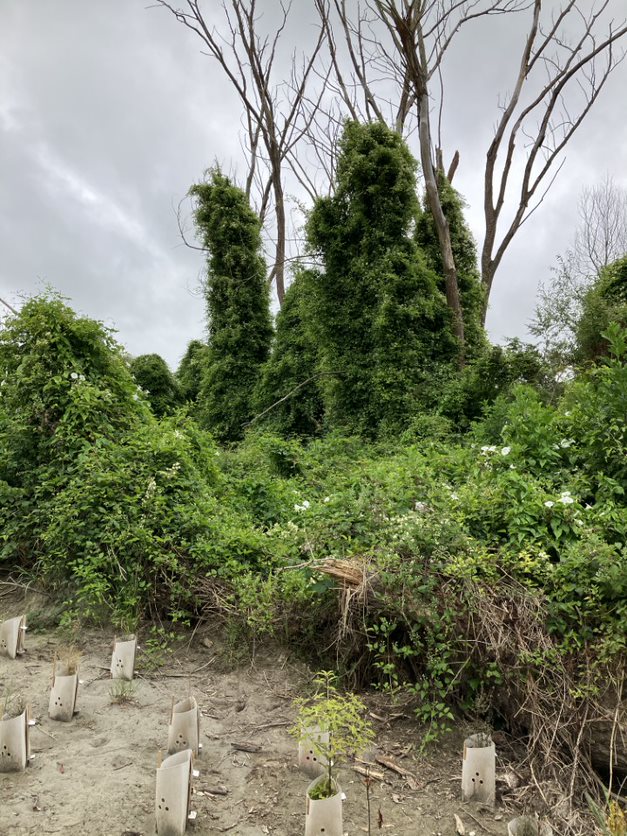
Enhancing the Ōpihi Walkway
We're teaming up with the Fairlie Lions Club to beautify a popular walk and bike trail along the Ōpihi River track.
Regeneration project supervisor Dani Devine is excited to be working with Fairlie Lions Club manager Lisa North to support the installation of 1000 plants along the trail.
"The Lions Club is doing a lot of great work up there. They do a lot of plants along the river and we're trying to add on to those when we pick our project sites to help them out as well," Dani said.
As part of our wider berm transition project, 11,000 native plants, including miki, tī kouka, and kānuka are earmarked to be planted along the berm of the Ōpihi River this year, adding to the 25,600 that were installed in 2022.
The berm transition project
We are transforming sites on 23 rivers throughout Waitaha Canterbury through targeted weeding and enhancement planting.
Targeted weeding means leaving flood protection trees and native flora untouched while eliminating pest plants like old man's beard, sycamore, and grey willow.
You can check out the berm transition project sites through our online map.
The regionwide berm transition project is part-funded by the Ministry of Business, Innovation and Employment Kānoa - Regional Economic Development and Investment Unit (64 per cent), with the remainder co-funded by us through a combination of contributions from partners and operational funding/rates.
Coming together for community
Currently, recreational users of the trail won't experience much biodiversity due to the berm area being covered in old man's beard, but that's about to change thanks to our combined efforts with the contractor Recreational Services and the Lions Club.
Dani explained, "Recreational Services were working on the Ōpihi and volunteered their own time to clear an area of weeds for the Lions Club to plant in. They also gifted some guards and weed mats for them to use to guard the plants they were putting in the area."
Dani has secured plants for the club that they'll be able to plant this winter.
Trialling native flood protection trees
Fairlie is located in a damp part of the Ōpihi River where plants thrive. Over 1500 mature phase trees will be planted among existing stands of traditional flood and erosion protection poles as we trial a move towards native flood protection stands.
Poplar and willow are commonly used for flood protection because they grow quickly and create deep root systems, whereas native trees are slow growing and take longer to establish roots.
Dani explained, "we use mature phase trees for the native plants like matai and tōtara that grow to be large trees. They take a long time to grow but they'll be big and secure on the ground and help stop erosion, the way the exotic flood protection trees do.
"They're a lot harder to get a hold of because they're so slow growing. Our contractors source them from local nurseries so they're eco-sourced to the areas that they're supposed to be in.
"Hopefully we can work towards using native flood protection in the future."
The case for permanent Central Government co-investment
Significant flood protection, biodiversity, and community projects like this have been made possible due to the Government's one-off COVID-19 response shovel-ready funding. However, climate change-induced events across the country have highlighted the urgent need to remediate flood protection infrastructure that has become outdated.
Currently, regional and unitary councils invest about $200 million each year in flood protection schemes. This is estimated to fall short of what is needed by $150 million per annum. Read the call from Te Uru Kahika to Central Government for long-term co-investment.
Flood protection infrastructure is the first line of defence for our communities and ageing structures can no longer meet the levels of service expected by communities against the challenge of climate change.
Maintenance and upgrades for flood protection assets are no longer sustainable for local communities. We need allied national support to face this challenge together.
What is increasingly clear is that a shared investment today means lower overall recovery costs and better protection for the environment and for current and future generations.


